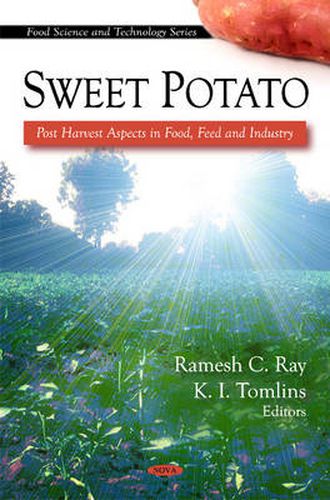Readings Newsletter
Become a Readings Member to make your shopping experience even easier.
Sign in or sign up for free!
You’re not far away from qualifying for FREE standard shipping within Australia
You’ve qualified for FREE standard shipping within Australia
The cart is loading…






Sweet potato (Ipomoea batatas L.), the seventh most important food crop after wheat, rice (paddy), maize, potato, barley and cassava, is a staple food in many developing countries of the tropics and sub-tropics, and also serves as animal feed and raw material for several food- and feed -based industries. This New World crop has high biological efficiency of converting solar energy into edible energy (152MJ/ha/day) in form of tuberous (storage) roots and could be the food for the ever growing human population in future. Asia leads in area (60.75%) and production (86.89%) of sweet potato in the world. Sweet potato was originally a herbaceous perennial but was domesticated as an annual and grows best in moderately warm climate and temperature of 21-26oC. It requires light textured soil with the optimum pH of 5.5 -6.5 for good growth of the crop. Current research has focused on development of high starch, high dry matter and coloured (ss-carotene and anthocyanin-rich) sweet potato varieties for industrial applications in addition to traditional usage as food and animal feed. Sweet potato storage roots are subjected to several forms of post harvest losses during harvest, transportation from farmers’ field to market and in storage. These are due to mechanical injury, weight loss, sprouting, diseases and pests. The subject, post harvest aspects of sweet potato in food, feed and industries, is a topic of current interest.
$9.00 standard shipping within Australia
FREE standard shipping within Australia for orders over $100.00
Express & International shipping calculated at checkout
Sweet potato (Ipomoea batatas L.), the seventh most important food crop after wheat, rice (paddy), maize, potato, barley and cassava, is a staple food in many developing countries of the tropics and sub-tropics, and also serves as animal feed and raw material for several food- and feed -based industries. This New World crop has high biological efficiency of converting solar energy into edible energy (152MJ/ha/day) in form of tuberous (storage) roots and could be the food for the ever growing human population in future. Asia leads in area (60.75%) and production (86.89%) of sweet potato in the world. Sweet potato was originally a herbaceous perennial but was domesticated as an annual and grows best in moderately warm climate and temperature of 21-26oC. It requires light textured soil with the optimum pH of 5.5 -6.5 for good growth of the crop. Current research has focused on development of high starch, high dry matter and coloured (ss-carotene and anthocyanin-rich) sweet potato varieties for industrial applications in addition to traditional usage as food and animal feed. Sweet potato storage roots are subjected to several forms of post harvest losses during harvest, transportation from farmers’ field to market and in storage. These are due to mechanical injury, weight loss, sprouting, diseases and pests. The subject, post harvest aspects of sweet potato in food, feed and industries, is a topic of current interest.